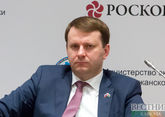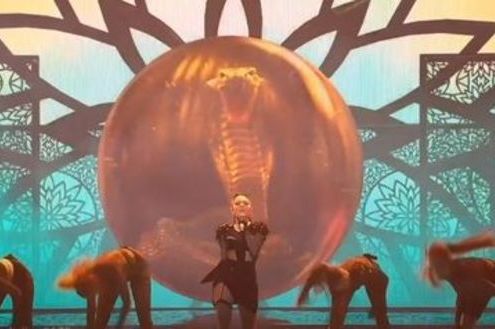Russian Economic Development Minister Maxim Oreshkin compared the current situation in Russia's economy with the state of affairs in the US economy in the first half of the 1980s.
According to him, low and steady inflation was achieved in the United States, which opened the way for a positive credit cycle that lasted 27 years.
Russian Economic Development Minister noted that, judging by the key indicators, Russia's economy is in a stable position, according to the latest data, inflation is 3.3%. In the next three years, economic growth is expected to be a minimum of 2%.
"The overall level of the debt burden in Russia's economy is quite low, as we can expect a long loan cycle. And it is up to the government and the Central Bank to make the credit cycle positive for economic growth," he noted. "It requires a concentration on corporate and investment lending, the development of such tools as mortgages," the ministry's website cited Oreshkin as saying.
The head of the ministry said that the government is implementing a number of measures aimed at supporting investment development. A new program for project financing is among them.
The head of the department of stock markets and financial engineering of the Faculty of Finance and the Banking Business of RANEPA, Konstantin Korischenko, speaking to Vestnik Kavkaza, noted that a comparison of modern Russia and the US of 35 years ago is quite appropriate in terms of inflation dynamics, but that's all. "If we say about the impact of low inflation on the economic growth, then I think we will see a big difference between the US and modern Russia. The fact is that more than two thirds of Russia's economy today is in the public sector, which is mainly focused on the budget and various kinds of state programs. Unlike the US, the stimulating role of the budget in Russia's economy is greater than the stimulating role of monetary policy," he explained.
In this regard, we should understand that low inflation is a necessary, but not sufficient, condition for economic growth to begin. "We also need to either increase the consumption of the population or increase the investment. I recall that a significant share of the US economic growth is determined by the consumption of the population. In Russia there were two driving factors in the 2000s - exports and income growth of the population," Konstantin Korishchenko recalled.
Professor of the RANEPA faculty of Finance, Money Circulation and Credit, Yuri Yudenkov, in turn, also drew attention to the fundamental differences between modern Russia and the US of the 1980s. "I would not make such an analogy, as the minister did, because we have different conditions. It is important that under current conditions, the inflation rate does not affect the economy as much as it did 35 years ago. Back then it was a key indicator, and now it is one of a number of other important factors, such as the dynamics of development, the standard of living, consumption. The economy of modern Russia is qualitatively different than the American one in the 1980s," he noted.
In particular, growth drivers have changed. "Comparing two economies of different times is like comparing modern people with people of that time. It's useless to speak conditionally about history," Yury Yudenkov said.
"Russia is no longer just a developing economy, as we consider ourselves a more or less developed country, and in this sense social indicators are very important: the people, their health, the consumption, the quality of life. For the social economy we are building the nation's state is important, maybe it's more important than anything else," the professor of the RANEPA faculty of Finance, Money Circulation and Credit concluded.










